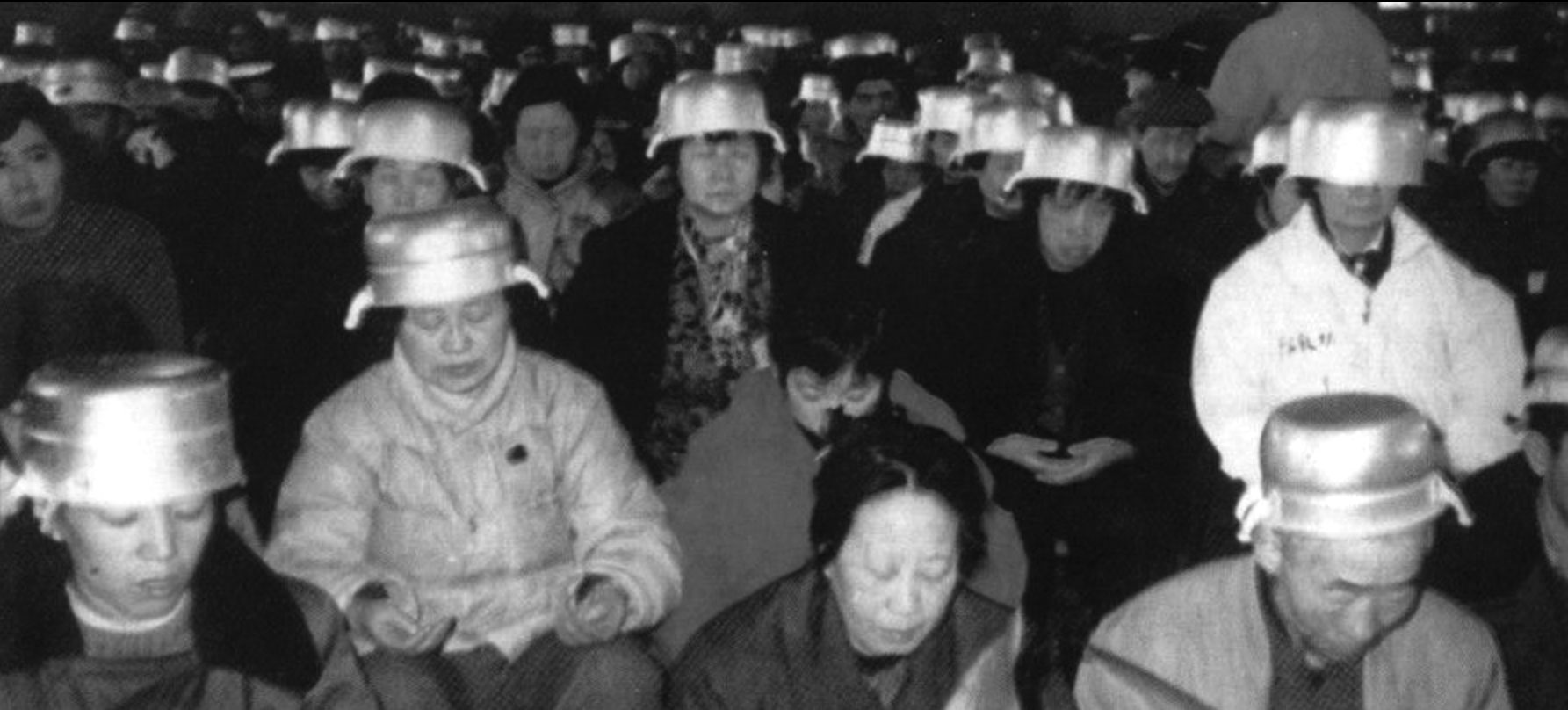See Nathan Sivin, “State, Cosmos, and Body in the Last Three Centuries B.C.,” Harvard Journal of Asiatic Studies 55, no. 1 (June 1995): 5–37; John Hay, “The Human Body as a Microcosmic Source of Macrocosmic Values in Calligraphy,” in Theories of the Arts in China, eds. Susan Bush and Christian F. Murck (Princeton University Press, 1983): 74–102; and Robin D. S. Yates, “Body, Space, Time, and Bureaucracy: Boundary Creation and Control Mechanisms in Early China,” in Boundaries in China, ed. John Hay (Reaktion Books, 1994), 56–81.
Of course, the sky and outer space constantly occupy the imagination of communication and give rise to many of what John Peters calls “sky-born” media. Rather than being empty, the sky is often conceived as the environment for the interactions between the human and the other. The development of communication technologies, from telegraph to wireless communication and radio and television networks, has also fueled all sorts of paranormal and spiritual imaginations and discourses to do with the sky and the atmosphere as the active space and agent for the encounter and mediation of different forces. See John Durham Peters, The Marvelous Clouds: Toward a Philosophy of Elemental Media (University of Chicago Press, 2016); and Jeffrey Sconce, Haunted Media: Electronic Presence from Telegraphy to Television (Duke University Press, 2000).
Shu Ting, “Huanghun Xing” 黄昏星 (Stars in twilight), Shanghai Wenxue no. 7 (1982): 44–45.
Li Xiaoying and Wang Yu, “Chengshi fengqi yugutianxian, Gangfeng beijian” 城市疯起鱼骨天线,港风北渐 (Fishbone antennas sweep across cities, and fashion of Hong Kong move northward).
See Commu(icat)ing Bodies: Body as Medium in Religious Symbol Systems, eds. Alexander Ornella, Stefanie Knauss, and Anna-Katharina Hopinger (Pano Verlag, 2014); Sconce, Haunted Media.
To give a few examples: Mark B. N. Hansen, New Philosophy for New Media (MIT Press, 2004), and Bodies in Code: Interface with New Media (Routledge, 2006); Bernadette Wegenstein, Getting Under the Skin: The Body and Media Theory (MIT Press, 2006).
About the representation of laboring bodies in the Mao era and the elevation of mental labor over physical labor in post-Mao China, see Paola Iovene, Tales of Futures Past: Anticipation and the Ends of Literature in Contemporary China (Stanford University Press, 2014), chap. 1, 19–49. Lisa Rofel regards the production of various desires and the creation of “desiring subjects” as crucial to China’s reconfiguration of its relationships to a postsocialist neoliberal world. Although she focuses on the post-Tiananmen world of 1990s China, this process of producing “desiring subjects” began as early as the 1980s with the start of marketization and especially the commercialization of culture in the mid- to late 1980s. See Lisa Rofel, Desiring China: Experiments in Neoliberalism, Sexuality, and Public Culture (Duke University Press, 2007).
Hansen, New Philosophy for New Media.
Hansen, New Philosophy for New Media, 2.
The celebration of prediscursive affect in recent media studies often ignores the fact that the affective capacity of the body is increasingly subject to the value extraction of information capitalism. Autonomist feminists and Marxists such as Michael Hardt and Kathi Weeks use the term “affective labor” to refer to labor for “the creation and manipulation of affects.” Steven Shaviro adopts this line of Marxist critique in his discussion on media and affect economy in Post-Cinematic Affect (Zero Books, 2010). See also Luciana Parisi and Steve Goodman, “Mnemonic Control,” in Beyond Biopolitics: Essays on the Governance of Life and Death, eds. Patricia Clough and Craig Willse (Duke University Press, 2011), 163–76. Weihong Bao also questions the understanding of affect as prediscursive. Instead, affect itself should be examined historically as a discursive construction and understood as susceptible to political and economic manipulation. See Bao, Fiery Cinema: The Emergence of an Affective Medium in China, 1915–1945 (University of Minnesota Press, 2015), 14–17.
Alexander Galloway, Eugene Thacker, and McKenzie Wark, Excommunication: Three Inquiries in Media and Mediation (University of Chicago Press, 2014), 7–10.
N. Katherine Hayles, How We Became Posthuman: Virtual Bodies in Cybernetics, Literature, and Informatics (University of Chicago Press, 1999); and “Cybernetics,” Critical Terms for Media Studies, eds. W. J. T. Mitchell and Mark B. N. Hansen (University of Chicago Press, 2010), 145–56.
Hayles, How We Became Posthuman mainly focuses on the development of cybernetics in North America. Andrew Pickering explores another genealogy among a group of British thinkers from the 1940s to the present. See Andrew Pickering, The Cybernetic Brain: Sketches of Another Future (Chicago: University of Chicago Press, 2010). Slava Gerovitch traces the history of cybernetics in the Soviet Union and how cybernetics was conceived as a universal method of problem-solving and a language of objectivity and truth. See Gerovitch, From Newspeak to Cyberspeak: A History of Soviet Cybernetics (MIT Press, 2002). Benjamin Peters provides a fascinating history of the rise of economic cybernetics in the Soviet Union, the attempts to build a “unified information network” to manage the national economy, and its unfortunate failure. See Peters, How Not to Network a Nation: The Uneasy History of the Soviet Internet (MIT Press, 2016). Eden Medina uncovers the history of short-lived socialist experiments in Chile under Salvador Allende by adopting a cybernetic system for economic management. See Medina, Cybernetic Revolutions: Technology and Politics in Allende’s Chile (MIT Press, 2011). Yuriko Furuhata explores the interconnections of cybernetics, architectural design, and multimedia environment in the case of Expo ’70 held in Osaka. Furuhata, “Multimedia Environments and Security Operations: Expo ’70 as a Laboratory of Governance,” Grey Room, no. 54 (Winter 2014): 55–79. In general, scholarship on cybernetic histories in the non-Western and Asian context has been limited, and even less has been written on the historical connections between the advent of postsocialism and the sudden pervasive discourse about a coming information society around the turn of the 1980s.
Yuezhi Zhao and Dan Schiller, “Dancing with Wolves? China’s Integration into Digital Capitalism,” Info 3, no. 2 (2001): 137–51.
Excerpted from the Introduction to Information Fantasies: Precarious Mediation in Postsocialist China by Xiao Liu (forthcoming February 2019). Copyright 2019 by the Regents of the University of Minnesota. Reproduced by permission of the University of Minnesota Press.
